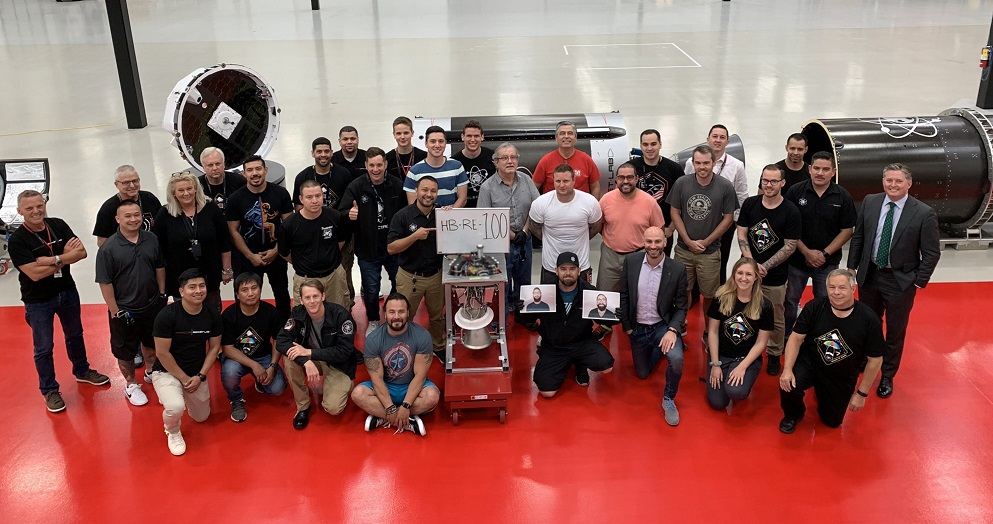Rocket Lab, a California-headquartered aerospace company, has completed the 100th build of its 3D printed Rutherford rocket engine.
Rocket Lab’s Rutherford engine is the first electric-pump-fed to be used in an orbital rocket. According to Peter Beck, founder and CEO of Rocket Lab, the engine has “played an integral part in enabling Rocket Lab to make the frequent and reliable launch a reality for small satellites,”
“It’s a testament to our innovative design and manufacturing teams that we’ve achieved everything we set out to do in just a few short years.”
Promising “unmatched performance” and “100% launch reliability” the Rutherford is a cornerstone part of the company’s pursuit of private space exploration.

Rutherford liquid engine
In 2009, Rocket Lab launched its first rocket named Ātea, a suborbital sounding rocket used to take scientific measurements in space. The Ātea weighs only sixty kilos and can carry a payload of up to two kg.
After the success of Ātea’s launch, Rocket Lab introduced the Electron, a two-stage launch vehicle, which uses the Rutherford liquid-propellant engine. Made of carbon composites the Electron can carry up to 225 kilos of payload.
One of the unique things about the Electron is that the Rutherford engines used in the rocket are powered by 3D printed liquid propellants which are capable of peaking a thrust of 120N. The Electron uses nine Rutherford engines and each propellant in the engine is 3D printed using electron beam melting (EBM) technology.
Now the company is celebrating the success of 100th print of its Rutherford engines. On achieving this milestone, Lachlan Matchett, Vice President of Propulsion at Rocket Lab, said, “Rutherford’s unique design certainly went against the grain of traditional rocket propulsion systems, so to make it to 100 flight-ready engines, more than 28,000 seconds of engine test run time and seven successful launches is a proud moment for the team,”
Last month the seventh Electron rocket was test-launched from the Rocket Lab Launch Complex 1 in New Zealand. In the coming twelve months, the company plans to produce 200 more Rutherford engines at its Huntington Beach facility.
Reducing payload costs
In recent years, additive manufacturing has become one of the most endorsed technologies in the space industry with some organizations promoting its use for sustainable space travel. Part of the reason for this is that 3D printed parts are lighter so they affect the overall weight of the vehicles.
In the space industry, this is a huge benefit as the cost of payloads can range between $10,000 to $100,000 per kilo for lower earth orbit. If the overall weight of a rocket, like Electron, can be reduced by using 3D printed parts then the payload cost can be cut and the payload capacity of the rocket can be increased.

To learn more about the space industry, subscribe to our 3D printing newsletter and join us on Facebook and Twitter.
We also have jobs in manufacturing, visit our Jobs page to learn more.
Featured image shows the team of Rocket Lab celebrating the 100th 3D print of the Rutherford engine. Image via Rocket Lab.

Leave A Comment